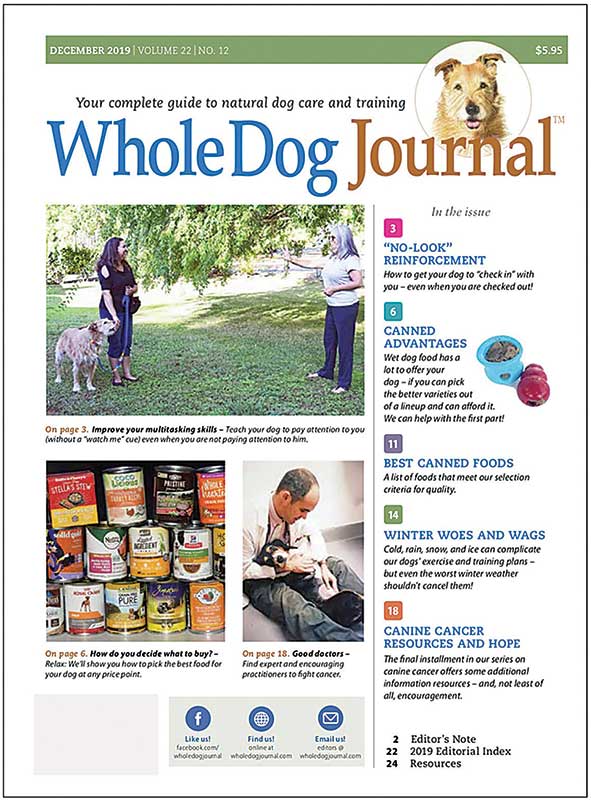By Heidi Dahms Foster
If you have a dog, it’s a good bet you are always looking for ways to help your pet stay healthy, happy, and free of behavior problems. You might not have time to read a library of books on all things dog, but there is one excellent publication that offers shorter but meaty reads on a number of canine subjects.
Whole Dog Journal is a longtime magazine publication that for years has offered the latest in-depth news on everything from training and behavior to pet food and health care. Great writing and photos offer practical instruction on basic training – sit, stay, down, walking on a leash, proper behavior around people and other dogs, and the one thing that can literally save your dog’s life, a fail-safe recall on command.
Whole Dog Journal doesn’t stop there. It examines in-depth such varied subjects as the best dog toys for every kind of dog, the right dog beds, teaching your dog to relax around bees, children, and dogs, and effective habits for dog owners, to name just a few.

The magazine also delves in depth into subjects that deeply concern dog owners, such as the burgeoning problem of cancer in our dogs, offering information and the latest treatment options. That alone makes the magazine worthwhile, but the thing that makes Whole Dog Journal immensely valuable is its information on feeding, and its annual lists of excellent wet and dry dog foods.
The dog food debate has exploded in the past couple of decades, and that’s a good thing. Dog food has improved, and so has the health of our pets. But navigating the possibilities and making sure our pets are getting the best foods can be overwhelming. Do we feed raw, dried, canned, cooked, or dehydrated? If we buy prepared food, which brands are the best, and which ones should we avoid?
Whole Dog Journal does not accept advertising, and has strict criteria to create its list of the healthiest wet and dry foods. Since 1998, Whole Dog Journal has published an annual review and rating of dry and wet dog foods.
The lists include what ingredients should be in your dog’s food, what ingredients to avoid, cost, and consideration of special needs such as activity level, growth, age, environment, illness, reproduction, altered dogs, and more. The list is new each year, so newer companies that are working to craft the best dog foods are included.
Additionally, a subscription to Whole Dog Journal includes short tips emailed to your inbox, a digital edition, and access to a wealth of information on its website. Treat yourself to a subscription of this excellent resource for $20 annually at wholedogjournal.com.

